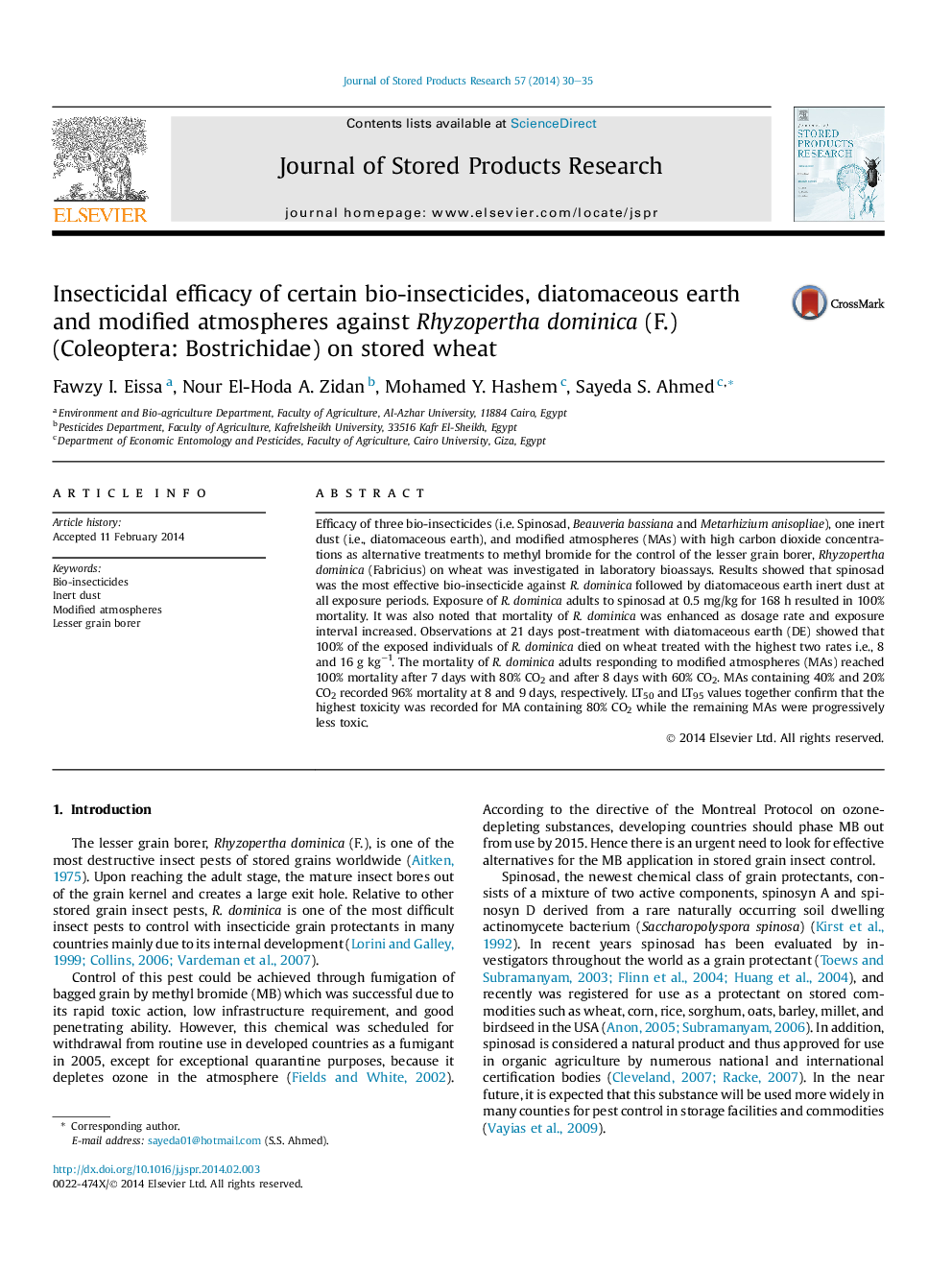| Article ID | Journal | Published Year | Pages | File Type |
|---|---|---|---|---|
| 6378506 | Journal of Stored Products Research | 2014 | 6 Pages |
â¢Spinosad was the most effective bio-insecticide against Rhyzopertha dominica adults.â¢Spinosad at 0.5 mg/kg exhibited 100% mortality in R. dominica adults after 7 days.â¢Diatomaceous earth showed 100% mortality in R. dominica at 21 days post-treatment.â¢Atmospheres containing 60 and 80% CO2 killed all R. dominica at 7 and 8 days of exposure, respectively.â¢Atmospheres containing 20 and 40% CO2 killed 96% of R. dominica at 8 and 9 days of exposure, respectively.
Efficacy of three bio-insecticides (i.e. Spinosad, Beauveria bassiana and Metarhizium anisopliae), one inert dust (i.e., diatomaceous earth), and modified atmospheres (MAs) with high carbon dioxide concentrations as alternative treatments to methyl bromide for the control of the lesser grain borer, Rhyzopertha dominica (Fabricius) on wheat was investigated in laboratory bioassays. Results showed that spinosad was the most effective bio-insecticide against R. dominica followed by diatomaceous earth inert dust at all exposure periods. Exposure of R. dominica adults to spinosad at 0.5 mg/kg for 168 h resulted in 100% mortality. It was also noted that mortality of R. dominica was enhanced as dosage rate and exposure interval increased. Observations at 21 days post-treatment with diatomaceous earth (DE) showed that 100% of the exposed individuals of R. dominica died on wheat treated with the highest two rates i.e., 8 and 16 g kgâ1. The mortality of R. dominica adults responding to modified atmospheres (MAs) reached 100% mortality after 7 days with 80% CO2 and after 8 days with 60% CO2. MAs containing 40% and 20% CO2 recorded 96% mortality at 8 and 9 days, respectively. LT50 and LT95 values together confirm that the highest toxicity was recorded for MA containing 80% CO2 while the remaining MAs were progressively less toxic.
